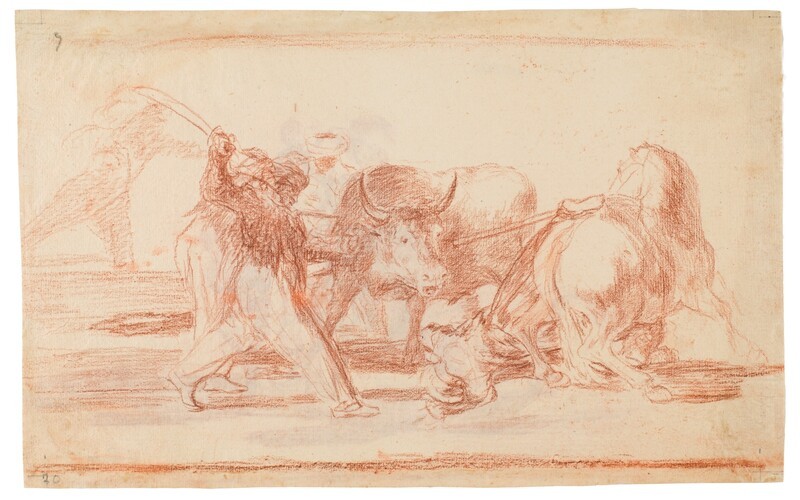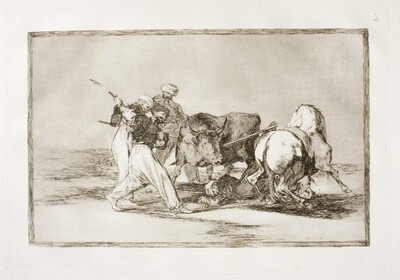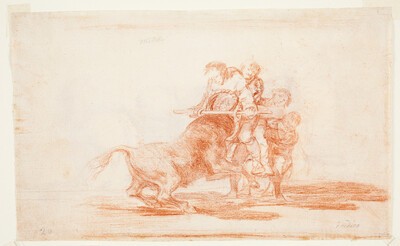- Cronología
- Ca. 1814 - 1816
- Ubicación
- The Prado National Museum. Madrid, Madrid, Spain
- Dimensiones
- 176 x 288 cm
- Técnica y soporte
- Sanguine on laid paper
- Reconocimiento de la autoría de Goya
- Documented work
- Titular
- El Prado National Museum
- Ficha: realización/revisión
- 30 Sep 2021 / 22 Jun 2023
- Inventario
- D4357
See How the ancient Spaniards hunted bulls on horseback in the countryside.
Javier Goya, Madrid, 1828; Mariano Goya, Madrid, 1854; Valentín Carderera, Madrid, c. 1861; Mariano Carderera, Madrid, 1880; Prado Museum, 12-11-1886.
See How the ancient Spaniards hunted bulls on horseback in the countryside.
Preparatory drawing for the print The Moors settled in Spain, dispensing with the superstitions of their Alcoran, adopted this hunting and art, and they throw a bull in the field, which Goya begins a group of six drawings that deal with the Muslim bullfighting practice established in Spain. It is clear that Goya, in his idiosyncratic way of interpreting past events, looked to the Egyptian troops of Turkish origin in Napoleon's army, the Mamluks, to depict the Muslims.
Lafuente Ferrari noted a compositional similarity between this painting and the central figure in the painting of the Second of May. The Moorish figure with the cutlass about to wound the bull is very similar to the figure of the Spaniard stabbing the Mamluk and the Moor falling from his horse recalls the one stabbed in the painting.
Matilla describes how the composition is understood not only as an illustration of the history of bullfighting but also as a battle scene that resembles those in the series of the Disasters, a series engraved at almost the same time, in which the executioner and the victim are fatally confused in battle.
-
Madrid2002
-
1946p.187-188
-
MadridMuseo del Prado1954n. 153
-
ParísLe Club Français du Livre1963p. 46
-
OxfordBruno Cassirer1964p. 363
-
Vie et ouvre de Francisco de GoyaParísOffice du livre1970p. 276, n. 1154
-
Barcelona1974p. 10
-
Dibujos de Goya, 2 volsBarcelonaNoguer1975pp. 334-335 y 428-429
-
MadridSilex1980p. 158
-
MadridMuseo Nacional del Prado2001pp. 45-46 y 111


